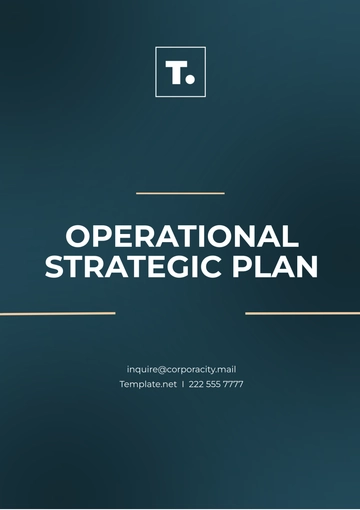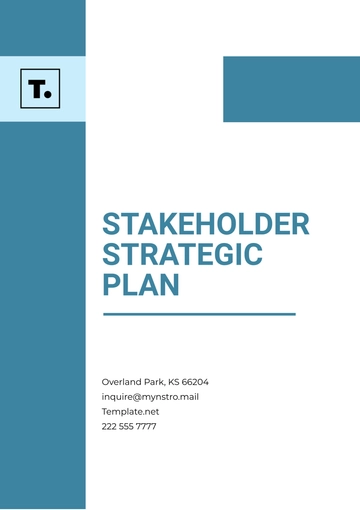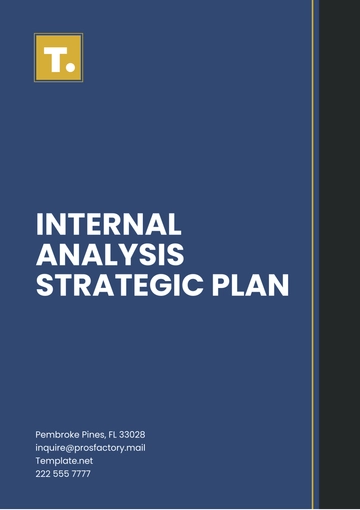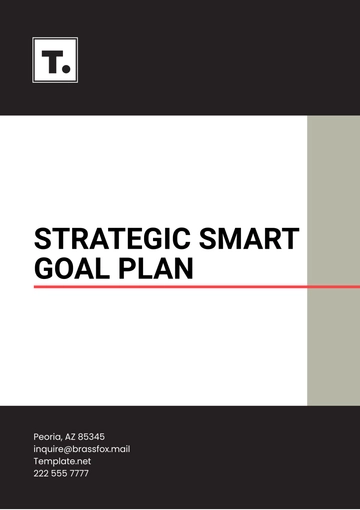Free School Strategic Plan

Name | School | Date |
|---|---|---|
[YOUR NAME] | [SCHOOL NAME] | [DATE] |
I. Introduction
A. Background
Our school, [SCHOOL NAME], is a diverse learning community committed to academic excellence and holistic development. With a rich history spanning over many years, we have continually evolved to meet the changing needs of our students and community. Despite our many successes, we recognize the challenges facing education today, including increasing academic standards, changing demographics, and technological advancements.
B. Purpose of the Strategic Plan
The purpose of this strategic plan is to chart a course for our school's future, outlining clear goals, objectives, and action steps to ensure that we continue to provide high-quality education and support to all students.
II. Vision, Mission, and Core Values
A. Vision Statement
Our vision is to inspire a lifelong love of learning, empower students to reach their full potential and cultivate responsible, compassionate citizens prepared to thrive in a global society.
B. Mission Statement
The mission of [SCHOOL NAME] is to provide a safe, inclusive learning environment where every student is valued, challenged, and supported to excel academically, socially, and emotionally.
C. Core Values
Equity and Inclusion
Academic Excellence
Integrity and Respect
Collaboration and Community Engagement
III. Goals and Objectives
A. Educational Outcomes
Goal: To improve student achievement and learning outcomes.
Objective 1: Increase standardized test scores in mathematics by 10% within the next three years.
Objective 2: Decrease the achievement gap among English language learners by 5% within the next two years.
B. Curriculum Development
Goal: To enhance the curriculum to meet the needs of diverse learners.
Objective 1: Revise the science curriculum to incorporate more hands-on, inquiry-based learning activities by the end of the next school year.
Objective 2: Integrate culturally responsive teaching practices into all subject areas by providing professional development workshops for teachers.
C. Teaching Methodologies
Goal: To promote innovative and effective teaching practices.
Objective 1: Provide training on differentiated instruction strategies to 80% of teachers by the end of this academic year.
Objective 2: Establish a peer observation program to encourage collaboration and the sharing of best practices among faculty members.
D. Professional Development for Staff
Goal: To support the continuous growth and development of educators.
Objective 1: Offer ongoing training on social-emotional learning strategies for all staff members.
Objective 2: Provide financial support for teachers pursuing advanced degrees or certifications in their field.
IV. Strategies and Action Plans
A. Student Support and Intervention
Implement a tiered intervention system to provide targeted support for struggling students, including academic tutoring and counseling services.
Offer after-school enrichment programs focused on STEM education and the arts to enhance student engagement and achievement.
B. Curriculum Enhancement
Review and update curriculum materials and resources annually to ensure alignment with state standards and best practices.
Partner with local museums, businesses, and community organizations to provide real-world learning experiences for students.
C. Professional Development Initiatives
Establish a professional learning community where teachers can collaborate, share resources, and engage in reflective practices to improve their instructional strategies.
Host guest speakers and workshops on topics such as culturally responsive teaching, trauma-informed practices, and technology integration.
V. Monitoring and Evaluation
A. Data Collection and Analysis
Collect and analyze student performance data, teacher evaluations, and stakeholder feedback annually to assess progress toward goals.
Use data to identify areas of strength and areas for improvement, adjusting strategies as needed.
B. Assessment of Strategies
Conduct regular evaluations of implemented strategies to determine their effectiveness in achieving desired outcomes.
Solicit feedback from students, parents, teachers, and community members to inform decision-making and continuous improvement efforts.
VI. Resource Allocation
A. Budget Planning
Allocate funds to support priority initiatives outlined in the strategic plan, including professional development, technology upgrades, and student support services.
Ensure transparency and equity in budget allocations, taking into account the needs of all students and staff members.
B. Staffing and Personnel
Assess staffing needs based on student enrollment, programmatic requirements, and strategic priorities.
Provide opportunities for ongoing professional development and career advancement for all staff members.
VII. Communication and Stakeholder Engagement
A. Internal Communication
Establish regular communication channels, such as staff meetings, newsletters, and intranet portals, to keep staff members informed about strategic plan goals and progress.
Encourage open dialogue and collaboration among faculty and staff members to ensure alignment with the school's mission and vision.
B. External Communication
Communicate strategic plan goals and initiatives to parents, students, and the wider community through newsletters, social media, and community events.
Seek input and involvement from community stakeholders, including businesses, nonprofits, and government agencies, in supporting and advancing the school's mission.
VIII. Conclusion
In conclusion, this Comprehensive School Strategic Plan reflects our commitment to continuous improvement and excellence in education. By working together as a community, we will strive to achieve our vision of providing a world-class education for all students at [SCHOOL NAME].
- 100% Customizable, free editor
- Access 1 Million+ Templates, photo’s & graphics
- Download or share as a template
- Click and replace photos, graphics, text, backgrounds
- Resize, crop, AI write & more
- Access advanced editor
Enhance your school's vision with our School Strategic Plan Template from Template.net. Tailored for educational institutions, this customizable and editable template empowers you to articulate clear goals and actionable strategies effortlessly. With our intuitive AI Editor Tool, streamline your planning process, ensuring alignment with objectives. Elevate your strategic initiatives with this template.





























